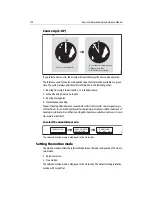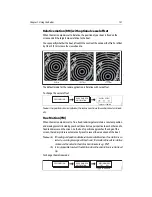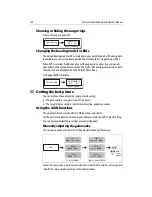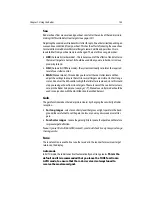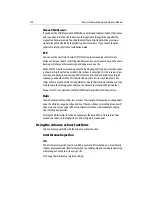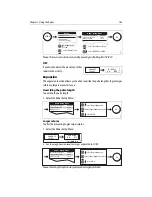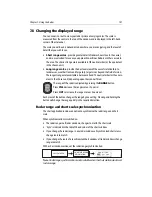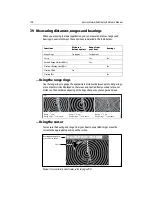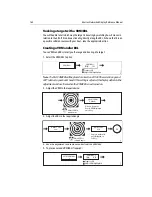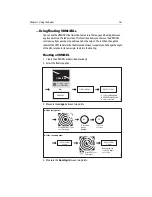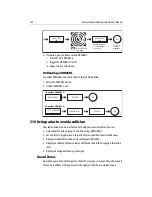
Chapter 7: Using the Radar
147
7.4 The radar picture
You will need heading and position data for full functionality of your radar. A fast
heading sensor is also needed for operation of MARPA and can maximize the
performance of radar/chart overlay.
With your radar scanner connected and the radar in transmit mode, the radar picture,
provides a map-like representation of the area in which the radar is operating e.g.
Typically, your boat’s position is at the centre of the display, and its dead ahead bearing
is indicated by a vertical heading line, known as the Ship’s Heading Marker (SHM).
On-screen targets may be large, small, bright or faint, dependent on the size of the
object, its orientation and surface. Strongest target returns are displayed in yellow
with weaker returns in two shades of blue. Be aware that the size of a target on screen
is dependent on many factors and may not necessarily be proportional to its physical
size. Nearby objects may appear to be the same size as a distant larger objects.
With experience, the approximate size of different objects can be determined by the
relative size and brightness of the echoes. You should bear in mind that:
The size of each on-screen target is affected by:
• The physical size of the reflecting object.
• The material from which the object is made. Metallic surfaces reflect signals better
than non-metallic.
• Vertical objects such as cliffs reflect signals better than sloping ones such as sand-
banks
• High coastlines and mountainous coastal regions can be observed at longer radar
ranges. Therefore, the first sight of land may be a mountain several miles inland
3nm
Head-Up
Relative Motion
Rings ½nm
VRM/EBL...
GAIN...
PRESENTATION...
TARGET
TRACKING...
ENHANCE
ECHOES...
D6803-3
Orientation
Data bar
Surface
vessel
Waypoint
Ship's
heading
marker
Radar
status
icon
Range
ring
Land-
mass
Boat's
position
Range
Motion mode
Range ring spacing
Summary of Contents for E120W
Page 1: ...E Series Networked Display Reference Manual Document number 81244_2 Date March 2006...
Page 22: ...6 E Series Networked Display Reference Manual...
Page 48: ...32 E Series Networked Display Reference Manual...
Page 194: ...178 E Series Networked Display Reference Manual...
Page 200: ...184 E Series Networked Display Reference Manual...
Page 206: ...190 E Series Networked Display Reference Manual...
Page 226: ...210 E Series Networked Display Reference Manual...
Page 254: ...238 E Series Networked Display Reference Manual...
Page 272: ...256 E Series Networked Display Reference Manual...
Page 276: ...260 E Series Networked Display Reference Manual...


















